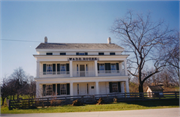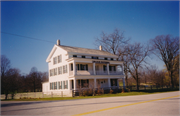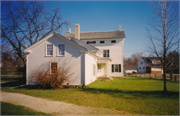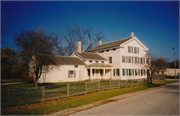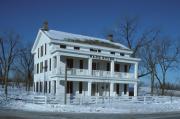| Additional Information: | A 'site file' exists for this property. It contains additional information such as correspondence, newspaper clippings, or historical information. It is a public record and may be viewed in person at the Wisconsin Historical Society, Division of Historic Preservation.
Located on the plank road halfway between Fond du Lac and Sheboygan, the Wade House became a relay station where the stagecoach drivers changed horses. Its twenty guest rooms filled to capacity almost every night. In 1850, proprietor Sylvanus Wade apparently engaged his son-in-law, Charles Robinson, to construct a commodious inn in the Greek Revival style. Robinson, who had been one of the hamlet’s first settlers and had established a sawmill here in 1847, was locally known for his carpentry skills. His craftsmanship is evident in the joinery of the window sashes, which he fastened with wooden pegs and mortise-and-tenon joints. A two-story porch, supported by two floors of simple square columns, spans the facade; a balustrade bounds the porch at the second story. Peeking through the frieze above the porch roof, attic windows light the third-story ballroom and the closet-sized bedrooms provided for the stagecoach drivers. Robinson trimmed the exterior with locally logged white pine. Inside the building, he hand-tooled the fine butternut woodwork. The interior and furnishings remain virtually as they appeared in the hostelry’s heyday.
About five years later, Robinson built his own frame residence nearby, also in the Greek Revival idiom. The style, so popular before the Civil War that it was known as the “National style,” flourished especially in those areas of the Old Northwest, like Wisconsin, that were being settled rapidly from the 1830s through the 1850s. An inset porch with simple square columns wraps around part of the square clapboard structure, and a row of six closely spaced doors provides access to the interior. A band of attic windows lights the second story, and a louvered deck or widow's walk, graced by wide pilasters and a decorative iron cresting, crowns the cedar-shingled low-hipped roof. The interior of the house remains intact, complete with its original butternut woodwork. |
|---|

